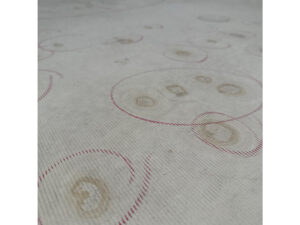Table of Contents
Commercial Roof Spring Cleaning Checklist
This is a quick Commercial Roof Spring Cleaning Checklist to make sure your facility is taken care of. Now that we are in the spring season, it is even more important that the roof is ready for the rainy season.
For the most part, this checklist can be followed in the order written, going from one to two to three, etc.
The first 4 are items that will take some time to clean. The next 4 are areas to check to make sure there are no problems. After all that, you can give your commercial roof a washing.
Here is the list:
- Remove Debris
- Clean Drains
- Clean Gutters
- Clean Scuppers
- Check Seams
- Check Flashing
- Check Penetrations
- Check Previous Repairs & Patches
- Wash Roofing Membrane
- Join a Maintenance Plan
With that said, let’s get to work!
1. Remove Debris
Before checking out any of the drains, gutters, seams, flashing, etc., it is a good idea to start with the debris and any other unnecessary items on the roof.
Common things to look for are leaves, limbs, forgotten tools, and unused materials.
If you have trees above or near, you may want to trim them back. As for the tools and materials, you may be thinking “there’s no way I have that on my roof.” You would be surprised. Throughout a year (and even a season), a number of people go out on our roof. Two examples:
- HVAC units are often on the roof and service technicians must go there for their checkups or repairs.
- Contractors may go up there a few times a year for inspections if you are part of a facilities maintenance plan.
You will want to make sure nothing is left behind on the roof after they are gone.
In the picture below, something as small and simple as a single screw can puncture your roof if stepped on.
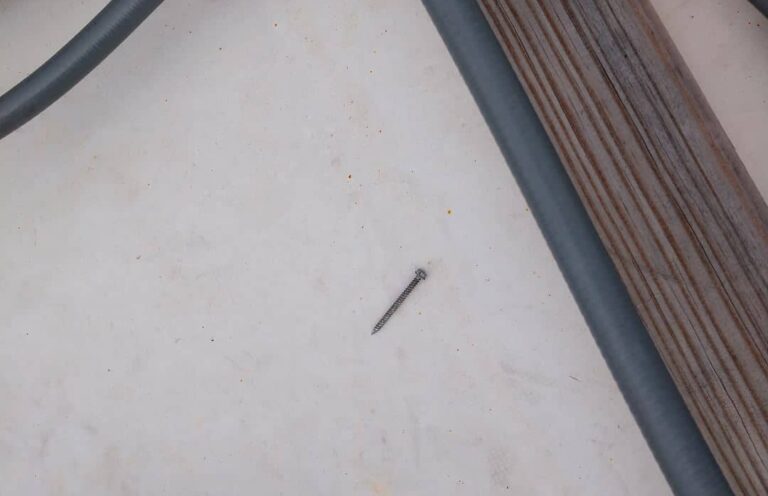
2. Clean Drains
Next, clean out the drains on your roof. This is a simple process and can help save years on your roof if it is causing standing water. We’ve seen too many roofs not have their drains cleaned. The result can cause a vast amount of water on the roof.
Standing water is the enemy.
You will want to clean out the screens and protective barriers around the drains that catch debris from going down into the pipes of the drain.
This is where much of the clogging happens. Occasionally, something may go down the drain to cause a blockage (usually due to the drain itself being damaged). In those cases, you may want a professional commercial roofer to fix the issue.
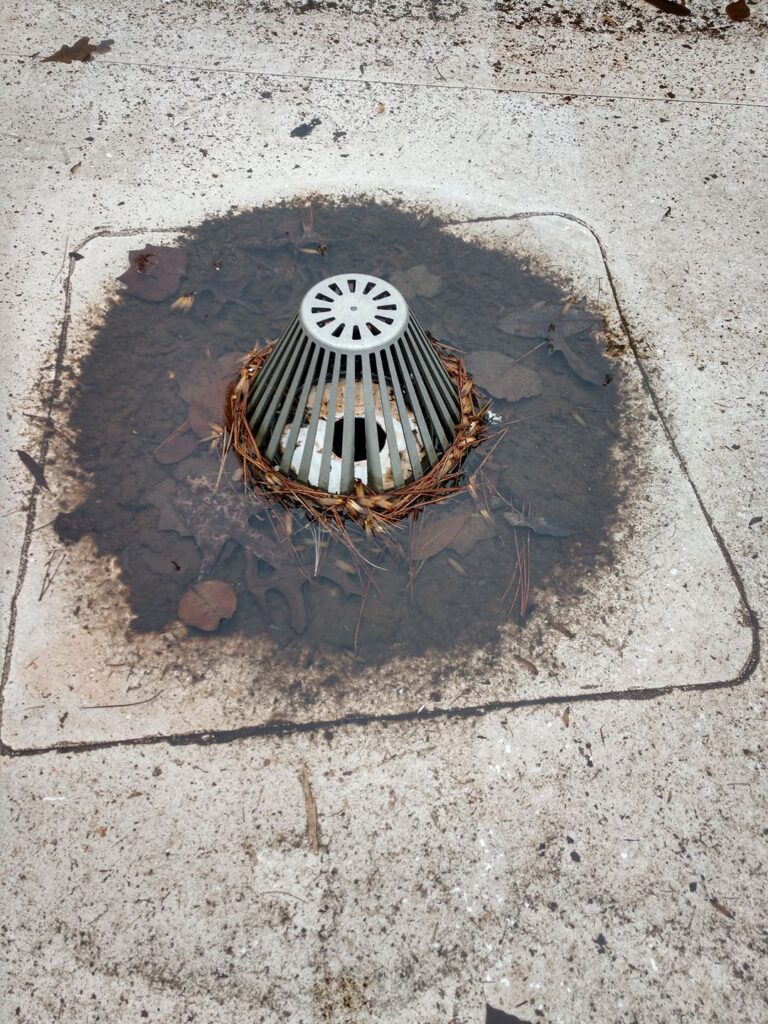
3. Clean Gutters
Your commercial roof may or may not have gutters attached to it.
Just as you would your residential home, you will want to clean out the gutters as part of your commercial roof spring cleaning checklist.
That would mean removing items in the gutters and things in and around the downspout.
Note that getting near the gutters on any roof is dangerous. Even on flat roofs, the wind can be strong enough to knock you off balance. Also, the higher the roof, the higher the wind pressure.
For that reason, we recommend harnessing yourself. Many roofs have a personal fall arrest system (PFAS) installed with an anchor to attach a harness to.
4. Clean Scuppers
A scupper is a hole you see from the outside of the building at the base of the parapet wall on the roof. Not every roof has these either.
Sometimes there is a scupper just below roof level with a downspout below it. It is at this level so water diverts out. A few feet away there is another scupper that is a few inches higher than the other scupper around the roof’s base.
If you see water coming out of the higher scupper, you know there must be a clog at the lower scupper or downspout. This also means there is a lot of ponding water on the roof.
Because scuppers are a little below the roof’s level, dirt can collect around them and fill up the scupper like a flower pot. It’s not unusual to find plants growing from them.
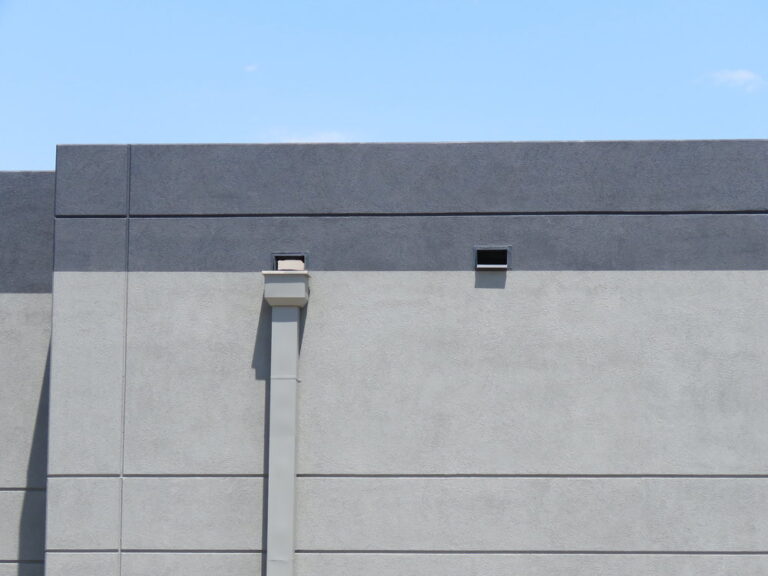
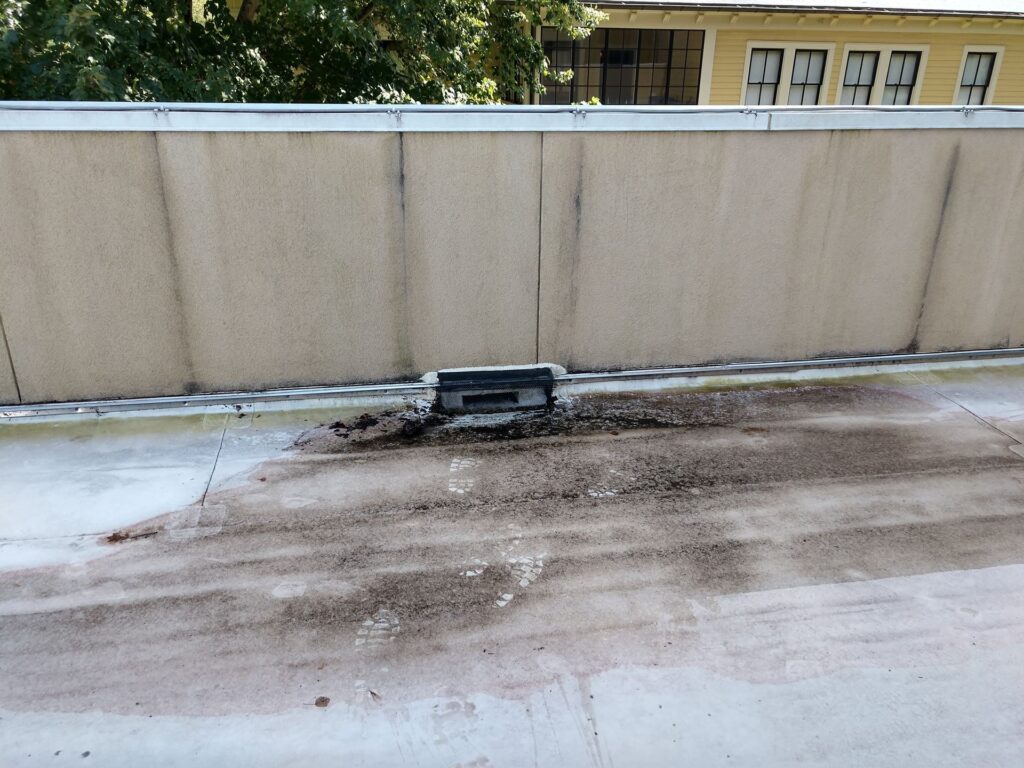
5. Check Seams
The next few items are things to monitor while on the roof. You also want to check these before you wash the roof to make sure you don’t have water leaks.
It is a good idea to check the seams where two membranes meet. Over time with the changing of the weather, the expansion and contraction could break down the membrane’s seal at the seams.
This is especially the case for older roofs that have gone through many seasons.
What to check? See if the seams are beginning to come apart. You don’t want to lift up on the seams because it could pull them apart. Check and make note of them. Mark them for future reference.
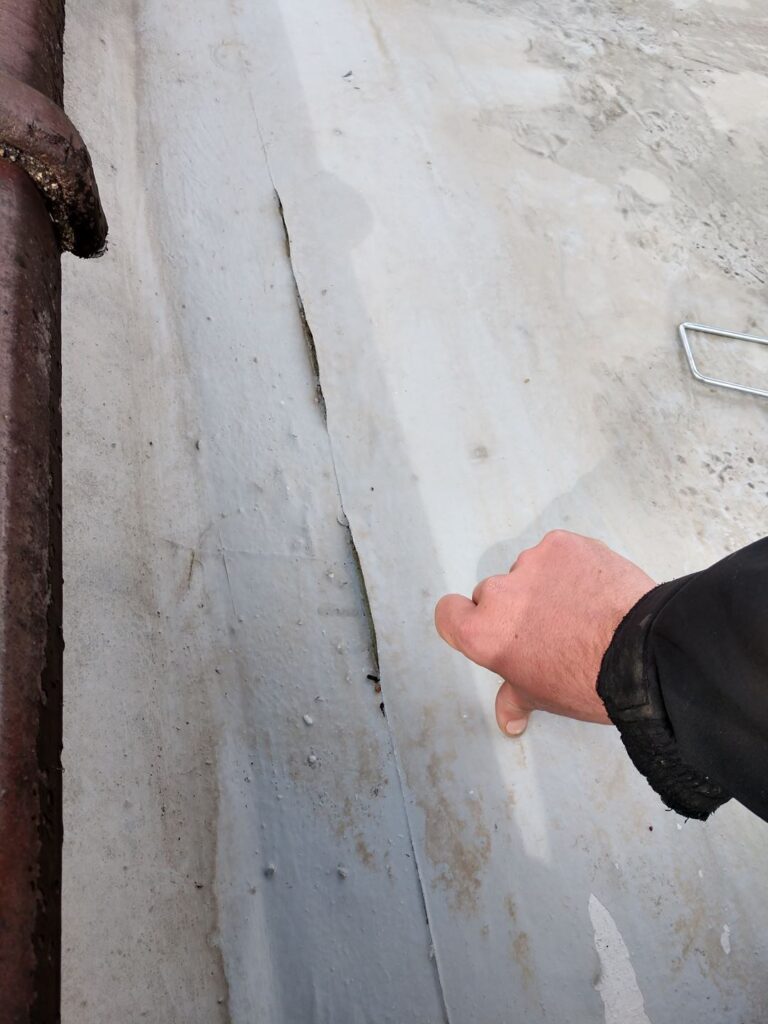
6. Check Flashing
Here, check the metal flashing to make sure it has not been damaged from the winter season in any way.
Metal is used at the roof’s breaks, joints, and edges.
A place to look is around the parapet walls if you have them. There should be metal flashing on the outside of the wall where the roofing membrane terminates (the membrane should go up and over the wall).
The metal flashing holds the membrane in place and protects it from the wind and increased uplift pressure. If the metal comes loose, it can catch underneath the membrane and begin pulling it off.
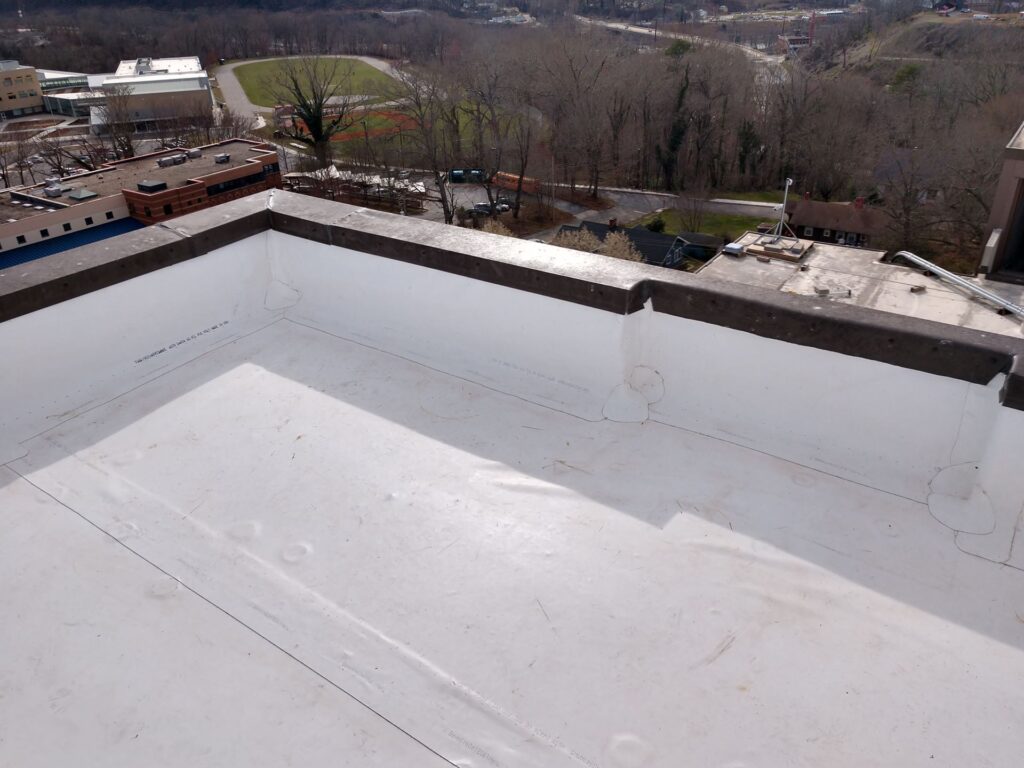
7. Check Penetrations
Penetrations are a major source of leaks (See our article Top 5 Causes of Roof Leaks). A penetration is any item coming out of the roof: think vent pipes.
What to look for is similar to the seams above. Look for any separation between the membrane and the boots, pipe seals, or wraps.
Make note of these for reference later.
8. Check Previous Repairs and Patches
This is an obvious place to check when you are on the roof since there has been issues with the area in the past. Where there was an issue before, there could be an issue again.
The good thing about these areas is that if it was patched by a professional commercial roofing company, they will have labeled the patch and repair work so you know who did it. They should have also labeled it with a date of when the work was done.
9. Wash Roofing Membrane's Dark Spots
Now that everything is cleaned and you are sure that nothing on the roof will lead to any leaks, you can get to washing your roof.
You could go the route of pressure washing your entire roof and removing the algae and moss from the roof. It’s chemical free, which is good.
We do not recommend using the pressure washer on high pressure. It’s best to use low pressure and a soft-bristle brush to scrub clean it with or without a cleaning solution.
But, here is the most important thing: clean the dark spots if you have a white roof (typically PVC or TPO although EPDM can be white and PVC and TPO can come in other colors).
Cleaning the dark spots is very important.
Remember when you cleaned the debris above? Usually, the debris collects where there is standing water. The water evaporates and leave all the dirt and debris. This dark spot absorbs more UV rays and begins to break down the membrane.
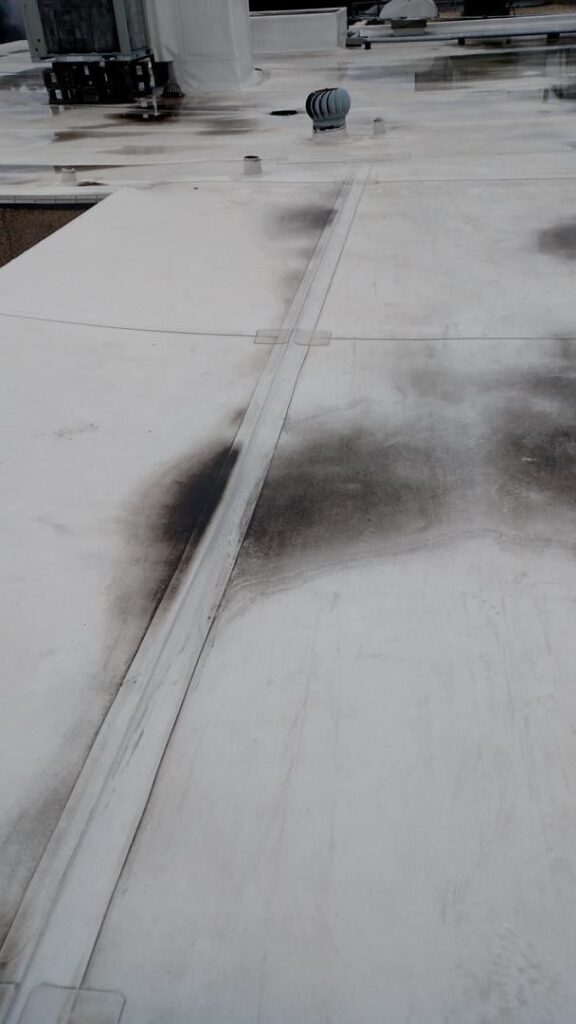
Thus, at the very least – whether you pressure wash or not – take the time to focus on the dark spots on your roof above all else. You can use a scrubber and detergent or pressure washer. Just be sure to clean those areas.
10. Join a Maintenance Plan
Finally, like most of us, time slips away. Other things take our attention and we are not able to get to doing a commercial roof cleaning checklist. Spring ends, Summer feels too hot, and next you know it is Fall and the roof has not been addressed.
That’s why many facility managers and owners have a Proactive Maintenance Plan.
No matter who maintenances your roof, the above items are important to be done at least once or twice a year.



